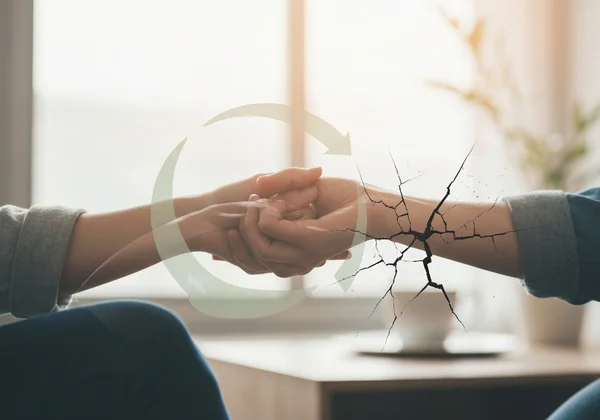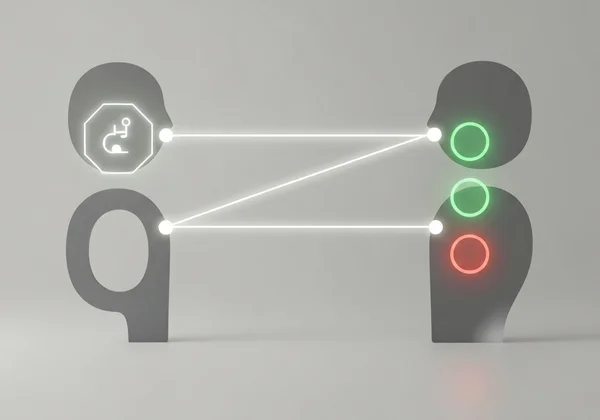Kink Test & Trauma: A Safe Exploration Guide for Survivors
Unlocking desires and exploring kinks can be a deeply personal and potentially healing journey. However, for those with a history of trauma, this path requires exceptional care, understanding, and intentional navigation. The intersection of kink and trauma can feel complex and intimidating. But how can you safely explore your desires when your past holds painful memories? This guide provides a sensitive, non-judgmental space to explore this very question, offering strategies for safe, empowering, and mindful engagement. Your journey of self-discovery is valid, and with the right tools, it can be a source of strength. Understanding your own unique profile is a crucial first step, and a comprehensive kink test can help you begin that process with a confidential assessment.

Understanding Kink & Trauma: A Path to Reclamation
For many survivors, the idea of engaging in activities involving power dynamics, control, or intense sensations can seem daunting. Yet, within the consensual framework of kink, many find a powerful avenue for healing. Unlike trauma, which is characterized by a profound loss of control, kink is built upon a foundation of enthusiastic consent, communication, and agency. Exploring BDSM and PTSD is not about reliving trauma but about rewriting the narrative in a controlled and empowering environment. It’s about reclaiming your body and your desires on your own terms. This journey begins with self-knowledge, and taking a free kink test can provide a private, non-judgmental starting point to map your interests.
How Kink Can Be a Journey of Empowerment and Healing
One of the most profound aspects of kink for survivors is the potential for reclaiming control. In a consensual kink dynamic, you set the rules, define the boundaries, and hold the ultimate power through safe words and explicit negotiation. This active participation can directly counteract feelings of helplessness often left by trauma. Engaging in consensual power exchange allows you to explore themes of dominance and submission safely, transforming a past vulnerability into a present strength. It becomes a space where you are in charge of your own experience, which can be incredibly therapeutic.

Identifying Potential Triggers and Navigating Sensitive Dynamics
A critical part of this journey is developing acute self-awareness. Trauma can leave behind triggers—sights, sounds, sensations, or dynamics that evoke an intense emotional or physical reaction. For survivors, mindful exploration is key. Learning to recognize your personal triggers without judgment is crucial. Is it a specific word, a type of restraint, or a particular emotional dynamic? Understanding these sensitivities isn’t about avoidance; it's about empowerment. When you know your triggers, you can communicate them clearly to a partner, create scenes that specifically navigate around them, or even work to gently desensitize them in a controlled, safe setting.
Essential Strategies for Trauma-Informed Kink Exploration
Navigating kink as a survivor requires a deliberate and conscious approach. A trauma informed kink practice prioritizes emotional and psychological safety above all else. It’s about building a framework that honors your history while allowing you to explore your present desires. Using tools like a kink test can help clarify those desires before involving a partner. This approach is not about limitations but about creating a sustainable and fulfilling practice that supports your overall well-being. It is a proactive way to ensure your explorations are healing rather than harmful.
Building a Foundation of Trust: Communication & Explicit Consent
For trauma survivors, trust can be a difficult but essential bridge to build. In the context of kink, this is achieved through radical communication and enthusiastic consent. Consent is not a one-time "yes" but an ongoing, clear, and excited agreement that can be withdrawn at any moment. Before engaging in any scene, a detailed negotiation should take place. This conversation covers what is desired, what the limits are (both hard and soft), and what is explicitly off-limits. This process itself is an act of empowerment, establishing a dynamic where your voice is the most important one in the room.
Setting Clear Boundaries, Safe Words, and Aftercare Essentials
Clear boundaries are the bedrock of safe kink. Safe words are non-negotiable tools that give you absolute control to stop or pause any activity, for any reason, without question. A traffic light system (Green for "go," Yellow for "slow down/caution," Red for "stop immediately") is a common and effective method. Equally important is aftercare practices. After an intense scene, aftercare helps you and your partner return to a grounded emotional and physical state. For survivors, this can be especially crucial for processing emotions. Aftercare can include cuddling, talking, sharing a snack, or simply quiet reassurance. It reinforces a return to safety and care, reaffirming that the dynamic was consensual and contained.

When and How to Seek Professional Support
While kink can be healing, it is not a substitute for professional therapy. Your journey of safe kink exploration can and should coexist with mental health support when needed. Recognizing your limits and knowing when to reach out for help is a sign of strength and self-awareness. It’s important to have a support system in place as you navigate the complex emotions that may arise during your explorations.
Recognizing When Kink Interactions Become Dysfunctional or Overwhelming
It's vital to be vigilant for warning signs that your kink practice may be becoming unhealthy. These can include feeling pressured to do things you're uncomfortable with, experiencing emotional flashbacks during or after scenes, feeling consistently distressed or anxious about your interactions, or finding that a partner dismisses your boundaries or safe words. If you notice signs of re-traumatization—where the activity is causing more distress than empowerment—it is essential to step back and re-evaluate. True trauma-informed kink should leave you feeling empowered and validated, not frightened or diminished.
Finding Trauma-Informed Therapists & Supportive Communities
If you decide to seek professional help, look for kink-aware professionals. These therapists understand the nuances of consensual kink and will not pathologize your interests. They can help you process your trauma in a way that integrates your identity as a kinky person. Additionally, connecting with supportive, well-vetted communities can provide invaluable peer support. Having people to talk to who understand both kink and trauma can reduce feelings of isolation and provide a space for shared learning and growth. Always prioritize communities that have clear codes of conduct and a strong emphasis on consent and safety.
Your Journey, Your Pace: Embracing Safe Self-Discovery
Exploring your kinks as a trauma survivor is a testament to your resilience and your right to a fulfilling, joyous life. This path is yours to define, and it should unfold at a pace that feels comfortable and safe for you. It’s a journey of rediscovery, reclamation, and profound self-acceptance. Remember that knowledge is the first step toward empowerment.
To better understand your unique desires and boundaries in a secure and private setting, consider taking the Kink Test. The results from your kink test can serve as a valuable tool for self-reflection and a gentle starting point for conversations with yourself or a trusted partner. Unlock your desires and discover what makes you unique—safely and confidently.

Frequently Asked Questions About Kink & Trauma
Can exploring kink genuinely be healing after experiencing trauma?
Yes, for many people it can be. Kink provides a unique opportunity to engage with themes of power, control, and vulnerability in a consensual and controlled environment. By consciously setting boundaries and being in charge of the experience, survivors can rewrite narratives associated with their trauma, which can be an incredibly empowering and healing process.
How do I know if I'm ready to explore my kinks with a trauma history?
Readiness is deeply personal. Key indicators include having a stable support system, feeling a genuine sense of curiosity rather than pressure, and having developed some skills for managing your trauma responses. If you feel you can communicate your needs and boundaries clearly and would be able to use a safe word, you may be ready to take gentle steps. Starting with self-exploration or taking a confidential sexual preference test can be a low-risk way to begin.
What is a safe word, and why is it especially crucial for trauma survivors?
A safe word is a pre-agreed-upon word or signal used to immediately stop a scene. It is absolutely non-negotiable. For survivors, it is a critical tool of agency. Trauma often involves having one's voice and "no" ignored. A safe word re-establishes that power, guaranteeing that you have unconditional control to end any activity at any time, which can be profoundly reassuring and healing.
Is it normal to feel conflicting emotions or fear when exploring kink with past trauma?
Absolutely. It is completely normal to feel a mix of excitement, curiosity, fear, and anxiety. Your body and mind are navigating new territory while still carrying the memory of past experiences. Be patient and compassionate with yourself. Acknowledge these feelings without judgment and allow them to guide you toward what feels safe and right for you. This journey is not linear.
Where can I find a trauma-informed professional or support group for kink?
You can search online directories for "kink-aware" or "poly-friendly" therapists, as they are often trained in or sensitive to trauma-informed care within diverse relationship and sexual contexts. Organizations that focus on sexuality education may also have resource lists. For peer support, look for established online communities or local groups that have strong moderation and a clear, enforced code of conduct emphasizing consent and safety.